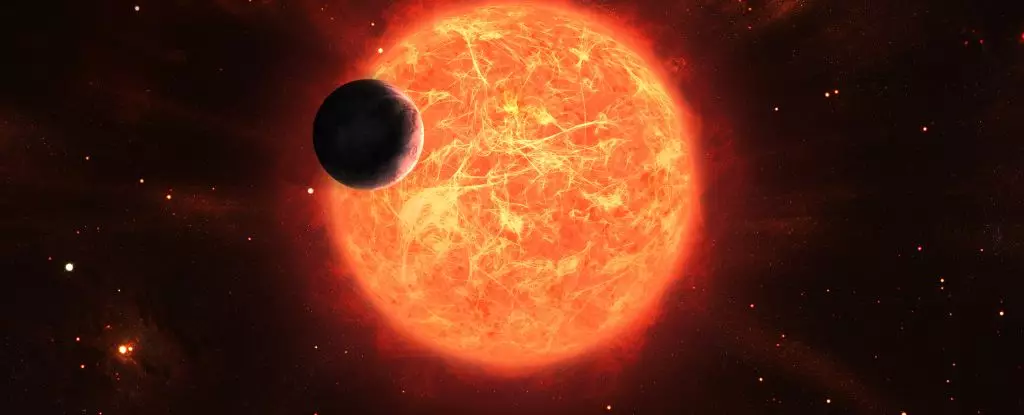The quest for a second Earth has long intrigued scientists and dreamers alike. The recent discovery of an exoplanet orbiting a white dwarf has only intensified this fascination, offering glimpses into the potential fate of our own planet. This article will delve into the implications of the discovery, the significance of microlensing, and the broader lessons we can learn about planetary survival in the harsh cosmos.
While the newly discovered exoplanet measures approximately 1.9 times the mass of Earth and orbits its white dwarf star at double the distance we are from our Sun, this celestial body comes with a caveat. Scientists speculate that any lifeforms that might once have existed on the planet were likely exterminated during the dramatic evolution of its star. White dwarfs are the remnants of stars like our Sun, which exhaust their nuclear fuel and undergo significant transformations, culminating in the violent expansion and eventual contraction that obliterates surrounding environments. Although the future of our own sun is similarly ominous, the findings regarding this far-off planet impart essential insights, almost serving as a cosmic mirror reflecting our own impending fate.
Understanding the lifecycle of stars is crucial for comprehending planetary systems. White dwarfs form after stars enter a red giant phase—a time when their outer layers expand dramatically. For our Sun, this event is predicted to occur in about five billion years. During this transformation, the Sun will grow large enough to potentially engulf Mercury, Venus, and even Earth. While this projection evokes concern about our planet’s future, examining how other celestial bodies respond to such cataclysmic events can provide a broader understanding of planetary endurance and resilience.
The case of the newly discovered exoplanet suggests that survival is feasible, even in the face of a white dwarf’s influence. Keming Zhang, the lead researcher from the University of California, emphasized that the exoplanet has seemingly weathered the deadly red giant phase of its host star. This revelation highlights the complexity of stellar evolution and invites us to consider the variety of outcomes that can emerge from similar catastrophic events.
The remarkable finding of this exoplanet was facilitated through a gravitational phenomenon known as microlensing. As the light from distant stars interacts with massive objects, such as white dwarfs, their gravitational pull can bend and magnify that light. This allows astronomers to infer the existence and characteristics of otherwise hidden worlds. The white dwarf in question is situated around 4,200 light-years from Earth. During a rare alignment, a bright star positioned 26,100 light-years away provided the necessary backdrop for the microlensing event, amplifying the signal from the exoplanet significantly. Such extraordinary astronomical methods open the door to discovering additional Earth-like planets that may have otherwise eluded our observations.
This discovery, while exciting, also suggests that Earth’s eventual fate may not be as dire as some models predict. The current orbital position of the exoplanet—approximately 2.1 astronomical units from its white dwarf—hints that Earth might confront similar conditions after our Sun transitions into its elder form. Some scientific models have posited that Earth may not survive this phase, but evidence from this exoplanet raises questions about the pessimism surrounding our planet’s future.
As we contemplate the future prospects of life on Earth, it’s crucial to remember that the conditions which currently sustain us will evolve drastically in the coming billions of years. The Sun’s increasing luminosity will ultimately render our planet uninhabitable; projections suggest that within a billion years, Earth will experience severe temperature rises, evaporating all our water and leading to desolation.
However, the future isn’t entirely bleak. Zhang posits that as the Sun expands into a red giant, the habitable zone will migrate outward to regions around Jupiter and Saturn, potentially transforming their moons into ocean worlds. This scenario sparks a renewed optimism about the adaptability of life and raises the possibility that organisms—a billion years from now—might thrive in environments that today seem inhospitable.
The exploration of an exoplanet surviving a near-fatal cosmic transition serves as both a cautionary tale and a source of hope. While the inevitability of our Sun’s transformation threatens Earth’s future, the existence of planets that have endured similar trials reinforces the notion that life is often resilient, adaptable, and capable of finding new homes. The ongoing search for Earth-like worlds encourages not only a deeper understanding of celestial dynamics but also respect for the delicate balance that sustains life across the universe. As we continue this cosmic journey, we must face our fate with both caution and curiosity, ever vigilant of the mysteries that lie in the vast expanse of space.


Leave a Reply